#asia news from pakistan
Explore tagged Tumblr posts
Text
Where can I find Free Palestine protests and Ceasefire protests?
A super international and continually updated list of actions can be found at Samidoun: Palestinian Prisoner Solidarity Network's:
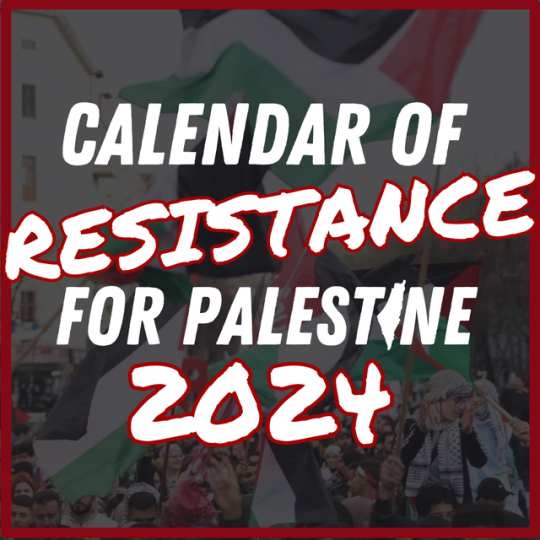
Calendar of Resistance for Palestine 2024
They list events by date, then alphabetically by country, then by city - and it's common for them to have dozens of actions listed for a single date, especially on the weekends.
The United States especially often has 40+ events on a single day, especially on the weekends.
Events are posted with links to the event info posted by whoever's hosting the vast majority of the time.
Look blow the read-more for a list of many of the countries that have been on this protest calendar, in alphabetical order, since I know so many websites/lists of actions are country-specific
*Obviously this isn't the only good source of listings for protest events - there are many others. This is by far the biggest/most international roundup I've found, though, so I started with this. If you know another good place for finding ceasefire protests/events, please feel free to add it in the notes, bc I'm planning to put a bigger roundup together once I find enough other sites
Countries that Samidoun has listed/does list protests for include (in alphabetical order):
North America:
United States
Canada
Mexico
Puerto Rico (listed separately in anti-colonial solidarity)
Hawai'i (listed separately in anti-colonial solidarity)
Europe:
Austria
Belgium
Bulgaria
Denmark
England
Finland
France
Germany
Greece
Hungary
Iceland
Ireland
Italy
Netherlands
Norway
Portugal
Romania
Scotland
Serbia
Spain
Sweden
Switzerland
Wales
SWANA Region (Southwest Asia/North Africa)*:
Bahrain
Iraq
Jordan
Kuwait
Lebanon
Palestine
Tunisia
Turkiye (Turkey)
*Samidoun notes that "We know that these events are mainly international and that the Arab people are marching everywhere for Palestine – we will be honored to add more Arab events whenever we are informed!"
Asia:
Bangladesh
India
Indonesia
Japan
Malaysia
Maldives
Pakistan
South Korea
Africa:
Kenya
Mauritius
Nigeria
South Africa
Tanzania
Tunisia
*Duplicating North African countries (well, Tunisia) here from the SWANA list btw
South America:
Brazil
Colombia
Chile
Peru
Venezuela
Australia and Oceania:
Aotearoa (New Zealand)
Australia
#reminder that “palestine” and “cw war” are the tags for all of my posts related to palestine#and that I only post relatively positive news about progress toward peace and resistance actions and the like#btw do NOT mess around in the notes with islamophobia OR antisemitism#neither are even remotely acceptable#palestine#cw war#free palestine#free gaza#israel#middle east#gaza#palestinian genocide#genocide#cw genocide#nakba#second nakba#ceasefire#palestine genocide#ceasefire now#palestine protest#gaza protests#gaza strip#gaza genocide#war crimes#ethnic cleansing#colonialism#anti zionisim
3K notes
·
View notes
Text
In addition to my Monkey Man post from earlier, the always kind & sweet Aparna Verma (author of The Phoenix King, check it out) asked that I do a thread on Hijras, & more of the history around them, South Asia, mythology (because that's my thing), & the positive inclusion of them in Monkey Man which I brought up in my gushing review.
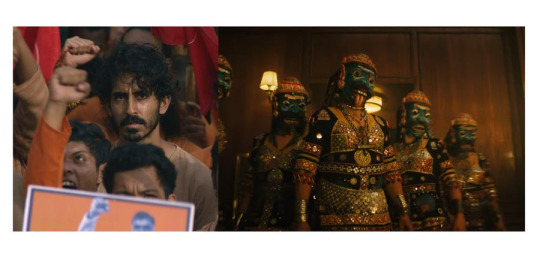
Hijra: They are the transgender, eunuch, or intersex people in India who are officially recognized as the third sex throughout most countries in the Indian subcontinent. The trans community and history in India goes back a long way as being documented and officially recognized - far back as 12th century under the Delhi Sultanate in government records, and further back in our stories in Hinduism. The word itself is a Hindi word that's been roughly translated into English as "eunuch" commonly but it's not exactly accurate.
Hijras have been considered the third sex back in our ancient stories, and by 2014 got official recognition to identify as the third gender (neither male or female) legally. Pakistan, Nepal, Bangladesh, and India have accepted: eunuch, trans, intersex people & granted them the proper identification options on passports and other government official documents.
But let's get into some of the history surrounding the Hijra community (which for the longest time has been nomadic, and a part of India's long, rich, and sometimes, sadly, troubled history of nomadic tribes/people who have suffered a lot over the ages. Hijras and intersex people are mentioned as far back as in the Kama Sutra, as well as in the early writings of Manu Smriti in the 1st century CE (Common Era), specifically said that a third sex can exist if possessing equal male and female seed.
This concept of balancing male/female energies, seed, and halves is seen in two places in South Asian mythos/culture and connected to the Hijra history.
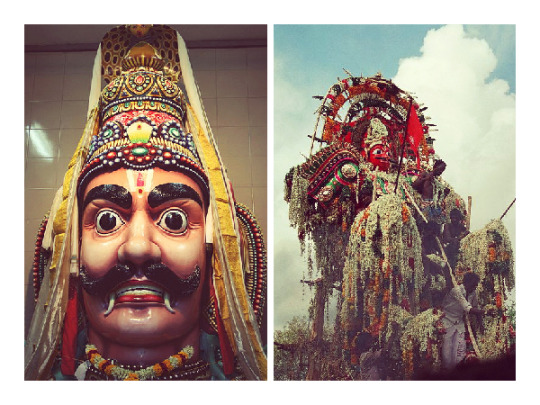
First, we have Aravan/Iravan (romanized) - who is also the patron deity of the transgender community. He is most commonly seen as a minor/village deity and is depicted in the Indian epic Mahabharata. Aravan is portrayed as having a heroic in the story and his self-sacrifice to the goddess Kali earns him a boon.
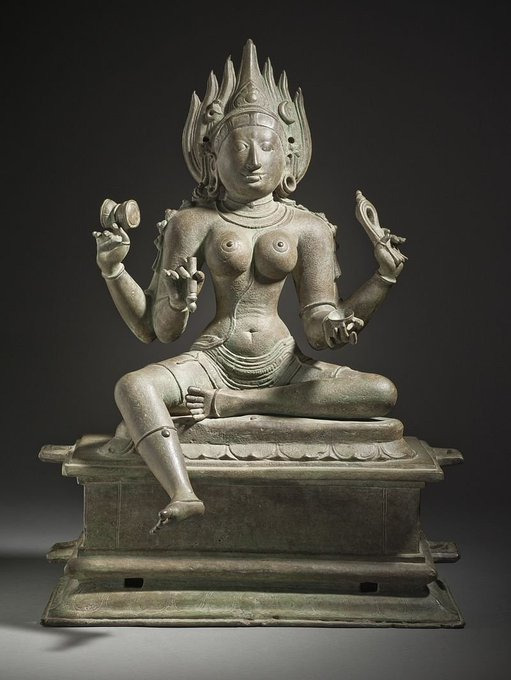
He requests to be married before his death. But because he is doomed to die so shortly after marriage, no one wants to marry him.
No one except Krishna, who adopts his female form Mohini (one of the legendary temptresses in mythology I've written about before) and marries him. It is through this union of male, and male presenting as female in the female form of Mohini that the seed of the Hijras is said to begun, and why the transgender community often worships Aravan and, another name for the community is Aravani - of/from Aravan.
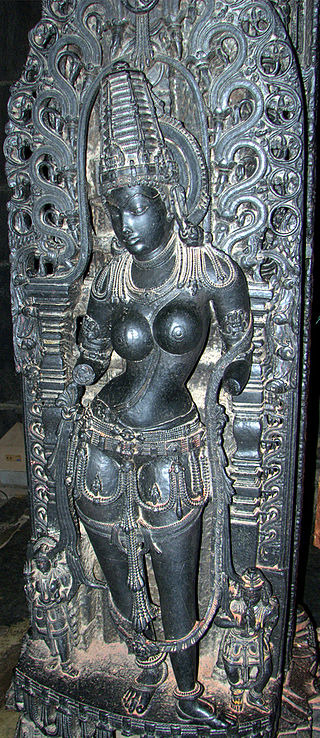
But that's not the only place where a gender non conforming divine representation can be seen. Ardhanarishvara is the half female form of lord Shiva, the destroyer god.
Shiva combines with his consort Parvarti and creates a form that represents the balancing/union between male/female energies and physically as a perfectly split down the middle half-male half-female being. This duality in nature has long been part of South Asian culture, spiritual and philosophical beliefs, and it must be noted the sexuality/gender has often been displayed as fluid in South Asian epics and the stories. It's nothing new.

Many celestial or cosmic level beings have expressed this, and defied modern western limiting beliefs on the ideas of these themes/possibilities/forms of existence.
Ardhanarishvara signifies "totality that lies beyond duality", "bi-unity of male and female in God" and "the bisexuality and therefore the non-duality" of the Supreme Being.
Back to the Hijra community.
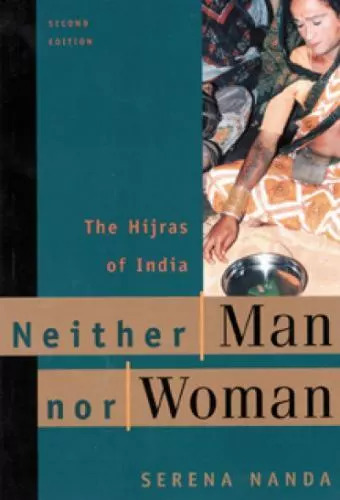
They have a complex and long history. Throughout time, and as commented on in the movie, Monkey Man, the Hijra community has faced ostracization, but also been incorporated into mainstream society there. During the time of the Dehli Sultanate and then later the Mughal Empire, Hijras actually served in the military and as military commanders in some records, they were also servants for wealthy households, manual laborers, political guardians, and it was seen as wise to put women under the protection of Hijras -- they often specifically served as the bodyguards and overseers of harems. A princess might be appointed a Hijra warrior to guard her.
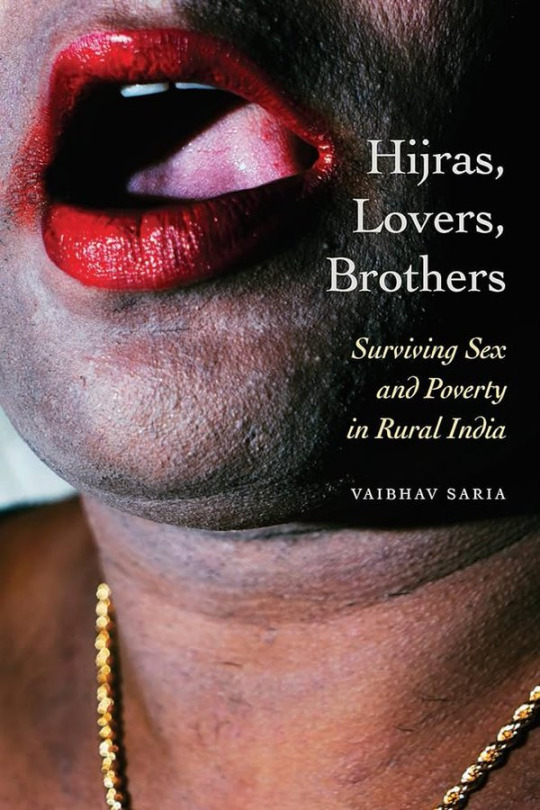
But by the time of British colonialism, anti-Hijra laws began to come in place folded into laws against the many nomadic tribes of India (also shown in part in Monkey Man with Kid (portrayed by Dev Patel) and his family, who are possibly
one of those nomadic tribes that participated in early theater - sadly by caste often treated horribly and relegated to only the performing arts to make money (this is a guess based on the village play they were performing as no other details were given about his family).
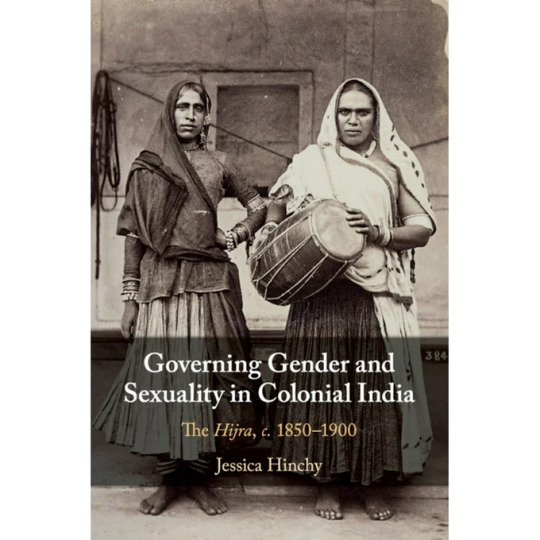
Hijras were criminalized in 1861 by the Indian Penal Code enforced by the British and were labeled specifically as "The Hijra Problem" -- leading to an anti-Hijra campaign across the subcontinent with following laws being enacted: punishing the practices of the Hijra community, and outlawing castration (something many Hijra did to themselves). Though, it should be noted many of the laws were rarely enforced by local Indian officials/officers. But, the British made a point to further the laws against them by later adding the Criminal Tribes Act in 1871, which targeted the Hijra community along with the other nomadic Indian tribes - it subjected them to registration, tracking/monitoring, stripping them of children, and their ability to sequester themselves in their nomadic lifestyle away from the British Colonial Rule.
Today, things have changed and Hijras are being seen once again in a more positive light (though not always and this is something Monkey Man balances by what's happened to the community in a few scenes, and the heroic return/scene with Dev and his warriors). All-hijra communities exist and sort of mirror the western concept of "found families" where they are safe haven/welcoming place trans folks and those identifying as intersex.
These communities also have their own secret language known as Hijra Farsi, which is loosely based on Hindi, but consists of a unique vocabulary of at least 1,000 words.
As noted above, in 2014, the trans community received more legal rights.
Specifically: In April 2014, Justice K. S. Radhakrishnan declared transgender to be the third gender in Indian law in National Legal Services Authority v. Union of India.
Hijras, Eunuchs, apart from binary gender, be treated as "third gender" for the purpose of safeguarding their rights under Part III of our Constitution and the laws made by the Parliament and the State Legislature. Transgender persons' right to decide their self-identified gender is also upheld and the Centre and State Governments are directed to grant legal recognition of their gender identity such as male, female or as third gender.
I've included some screenshots of (some, not all, and certainly not the only/definitive reads) books people can check out about SOME of the history. Not all again. This goes back ages and even our celestial beings/creatures have/do display gender non conforming ways.
There are also films that touch on Hijra history and life. But in regards to Monkey Man, which is what started this thread particularly and being asked to comment - it is a film that positively portrayed India's third sex and normalized it in its depiction. Kid the protagonist encounters a found family of Hijras at one point in the story (no spoilers for plot) and his interactions/acceptance, living with them is just normal. There's no explaining, justifying, anything to/for the audience. It simply is. And, it's a beautiful arc of the story of Kid finding himself in their care/company.
#hijra#trans representation#monkey man#dev patel#transgender#trans rights#trans rights are human rights#third sex#indian history#indian culture#colonialism#imperialism#south Asian mythos#South Asian myths#Aravan#Iravan#Mahabharata#hindu mythology#hindu gods#kali goddess#krishna#hindu mythology art#Ardhanarishvara#Shiva#Parvarti#sexuality#gender fluid#fluid sexuality#trans community#transgender rights
774 notes
·
View notes
Text
The Real Cost of the Fashion Industry
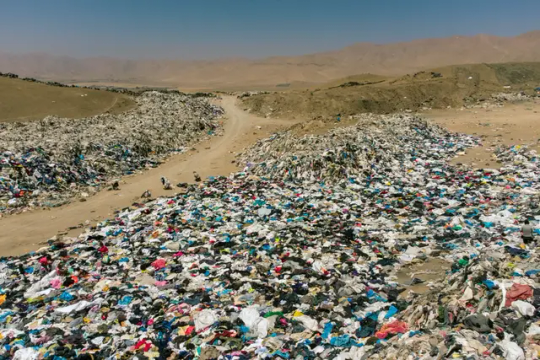
Atacama Desert, in Alto Hospicio, Iquique, Chile. (source)
The textile industry is destroying the world. The industry is wasting massive amounts of energy and materials, and polluting the air, the ground and the water supplies. It overwhelmingly exploits it's labour and extracts wealth from colonized countries, especially in Asia. I assume we all broadly understand this, but I think it's useful to have it all laid out in front of you to see the big picture, the core issues causing this destruction and find ways how to effectively move forward.
The concerning trend behind this ever-increasing devastation are shortening of trend cycles, lowering clothing prices and massive amount of wasted products. Still in year 2000 it was common for fashion brands to have two collections per year, while now e.g. Zara produces 24 collections and H&M produces 12-16 collections per year. Clothing prices have fallen (at leas in EU) 30% from 1996 to 2018 when adjusted to inflation, which has contributed to the 40% increase in clothing consumption per person between 1996 and 2012 (in EU). (source) As the revenue made by the clothing industry keep rising - from 2017 to 2021 they doubled (source) - falling prices can only be achieved with increasing worker exploitation and decreasing quality. I think the 36% degrees times clothing are used in average during the last 15 years (source) is a clear indication on the continuing drop in quality of clothing. Clothing production doubled between 2000 and 2015, while 30% of the clothes produced per year are never sold and are often burned instead (source), presumably to prevent the returns from falling due to oversupply.
These all factors are driving people to overconsume. While people in EU keep buying more clothes, they haven't used up to 50% of the clothes in their wardrobe for over a year (source). This overconsumption is only made much worse by the new type of hyper fast fashion companies like SHEIN and Temu, which are using addictive psychological tactics developed by social media companies (source 1, source 2). They are cranking up all those concerning trends I mentioned above.
Under the cut I will go through the statistics of the most significant effects of the industry on environment and people. I will warn you it will be bleak. This is not just a fast fashion problem, basically the whole industry is engaging in destructive practices leading to this damage. Clothing is one of those things that would be actually relatively easy to make without massive environmental and human cost, so while that makes the current state of the industry even more heinous, it also means there's hope and it's possible to fix things. In the end, I will be giving some suggestions for actions we could be doing right now to unfuck this mess.
Carbon emissions
The textile industry is responsible for roughly 10% of the global CO2 emissions, more than aviation and shipping industry combined. This is due to the massive supply chains and energy intensive production methods of fabrics. Most of it can be contributed to the fashion sector since around 60% of all the textile production is clothing. Polyester, a synthetic fiber made from oil which accounts for more than half of the fibers used in the textile industry, produces double the amount of carbon emissions than cotton, accounting for very large proportions of all the emissions by the industry. (source 1, source 2)
Worker exploitation
Majority of the textiles are produced in Asia. Some of the worst working conditions are in Bangladesh, one of the most important garment producers, and Pakistan. Here's an excerpt from EU Parliament's briefing document from 2014 after the catastrophic Rana Plaza disaster:
The customers of garment producers are most often global brands looking for low prices and tight production timeframes. They also make changes to product design, product volume, and production timeframes, and place last-minute orders without accepting increased costs or adjustments to delivery dates. The stresses of such policies usually fall on factory workers.
The wage exploitation is bleak. According to the 2015 documentary The True Cost less than 2% of all garment factory workers earned a living wage (source). Hourly wages are so low and the daily quotas so high, garment workers are often forced through conditions or threats and demand to work extra hours, which regularly leads to 10-12 hour work days (source) and at worst 16 hour workdays (source), often without days off. Sometimes factories won't compensate for extra hours, breaching regulations (source).
Long working hours, repetitive work, lack of breaks and high pressure leads to increased risks of injuries and accidents. Small and even major injuries are extremely common in the industry. A study in three factories in India found that 70% of the workers suffered from musculosceletal symptoms (source). Another qualitative study of female garment workers and factory doctors in Dhaka found that long hours led to eye strain, headaches, fatigue and weight loss in addition to muscular and back pains. According to the doctors interviewed, weight loss was common because the workers work such long hours without breaks, they didn't have enough time to eat properly. (source) Another study in 8 factories in India found that minor injuries were extremely common and caused by unergonomic work stations, poor organization in the work place and lack of safety gear, guidelines and training (source). Safety precautions too are often overlooked to cut corners, which periodically leads to factory accidents, like in 2023 lack of fire exists and fire extinguishers, and goods stacked beyond capacity led to a factory fire in Pakistan which injured dozens of workers (source) or like in 2022 dangerous factory site led to one dead worker and 9 injured workers (source).
Rana Plaza collapse in 2013 is the worst industrial accident in recent history. The factory building did not have proper permits and the factory owner blatantly ignored signs of danger (other businesses abandoned the building a day before the collapse), which led to deaths of 1 134 workers and injuries to 2 500 workers. The factory had or were at the time working for orders of at least Prada, Versace, Primark, Walmart, Zara, H&M, C&A, Mango, Benetton, the Children's Place, El Corte Inglés, Joe Fresh, Carrefour, Auchan, KiK, Loblaw, Bonmarche and Matalan. None of the brands were held legally accountable for the unsafe working conditions which they profited off of. Only 9 of the brands attended a meeting to agree on compensation for the victim's families. Walmart, Carrefour, Auchan, Mango and KiK refused to sight the agreement, it was only signed by Primark, Loblaw, Bonmarche and El Corte Ingles. The compension these companies provided was laughable though. Primemark demanded DNA evidence that they are relatives of one of the victims from these struggling families who had lost their often sole breadwinner for a meager sum of 200 USD (which doesn't even count for two months of living wage in Bangladesh (source)). This obviously proved to be extremely difficult for most families even though US government agreed to donate DNA kits. This is often said to be a turning point in working conditions in the industry, at least in Bangladesh, but while there's more oversight now, as we have seen, there's clearly still massive issues. (source 1, source 2)
One last major concern of working conditions in the industry I will mention is the Xinjiang raw cotton production, which is likely produced mainly with forced labour from Uighur concentration camps, aka slave labour of a suspected genocide. 90% of China's raw cotton production comes from Xinjiang (source). China is the second largest cotton producer in the world, after India, accounting 20% of the yearly global cotton production (source).
Pollution
Synthetic dyes, which synthetic fibers require, are the main cause of water pollution caused by the textile industry, which is estimated to account for 20% of global clean water pollution (source). This water pollution by the textile industry is suspected of causing a lot of health issues like digestive issues in the short term, and allergies, dermatitis, skin inflammation, tumors and human mutations in the long term. Toxins also effect fish and aquatic bacteria. Azo dyes, one of the major pollutants, can cause detrimental effects to aquatic ecosystems by decreasing photosynthetic activity of algae. Synthetic dyes and heavy metals also cause large amounts of soil pollution. Large amounts of heavy metals in soil, which occurs around factories that don't take proper environmental procautions, can cause anaemia, kidney failure, and cortical edoem in humans. That also causes changes in soil texture, decrease in soil microbial diversity and plant health, and changes in genetic structure of organisms growing in the soil. Textile factory waste water has been used for irrigation in Turkey, where other sources of water have been lacking, causing significant damage to the soil. (source)
Rayon produced through viscose process causes significant carbon disulphide and hydrogen sulphide pollution to the environment. CS2 causes cardiovascular, psychiatric, neuropsychological, endocrinal and reproductive disorders. Abortion rates among workers and their partners exposed to CS2 are reported to be significantly higher than in control groups. Many times higher amounts of sick days are reported for workers in spinning rooms of viscose fiber factories. China and India are largest producers of CS2 pollution, accounting respectively 65.74% and 11,11% of the global pollution, since they are also the major viscose producers. Emission of CS2 has increased significantly in India from 26.8 Gg in 2001 to 78.32 Gg in 2020. (source)
Waste
The textile industry is estimated to produce around 92 million tons of textile waste per year. As said before around 30% of the production is never sold and with shortening lifespans used the amount of used clothing that goes to waster is only increasing. This waste is large burned or thrown into landfills in poor countries. (source) H&M was accused in 2017 by investigative journalists of burning up to 12 tonnes of clothes per year themselves, including usable clothing, which they denied claiming they donated clothing they couldn't sell to charity instead (source). Most of the clothing donated to charity though is burned or dumbed to landfills (source).
Most of the waste clothing from rich countries like European countries, US, Australia and Canada are shipped to Chile (source) or African countries, mostly Ghana, but also Burkina Faso and Côte d'Ivoire (source). There's major second-hand fashion industries in these places, but most of the charity clothing is dumbed to landfills, because they are in such bad condition or the quality is too poor. Burning and filling landfills with synthetic fabrics with synthetic dyes causes major air, water and soil pollution. The second-hand clothing industry also suppresses any local clothing production as donated clothing is inherently more competitive than anything else, making these places economically reliant on dumbed clothing, which is destroying their environment and health, and prevents them from creating a more sustainable economy that would befit them more locally. This is not an accident, but required part of the clothing industry. Overproduction let's these companies tap on every new trend quickly, while not letting clothing the prices in rich countries drop so low it would hurt their profits. Production is cheaper than missing a trend.
Micro- and nanoplastics
There is massive amounts of micro- and nanoplastics in all of our environment. It's in our food, drinking water, even sea salt (source). Washing synthetic textiles accounts for roughly 35% of all microplastics released to the environment. It's estimated that it has caused 14 million tonnes of microplastics to accumulate into the bottom of the ocean. (source)
Microplastics build up into the intestines of animals (including humans), and have shown to probably cause cause DNA damage and altered organism behavior in aquatic fauna. Microplastics also contain a lot of the usual pollutants from textile industry like synthetic dyes and heavy metals, which absorb in higher quantities to tissues of animals through microplastics in the intestines. Studies have shown that the adverse effect are higher the longer the microplastics stay in the organism. The effects cause major risks to aquatic biodiversity. (source) The health effects of microplastics to humans are not well known, but studies have shown that they could have adverse effects on digestive, respiratory, endocrine, reproductive and immune systems. (source)
Microplastics degrade in the environment even further to nanoplastics. Nanoplastic being even smaller are found to enter blood circulation, get inside cells and cross the blood-brain barrier. In fishes they have been found to cause neurological damage. Nanoplastics are also in the air, and humans frequently breath them in. Study in office buildings found higher concentration of nanoplastics in indoor air than outdoor air. Inside the nanoplastics are likely caused mostly by synthetic household textiles, and outdoors mostly by car tires. (source) An association between nanoplastics and mitochondrial damage in human respiratory cells was found in a recent study. (source)
Micro and nano plastics are also extremely hard to remove from the environment, making it even more important that we reduce the amount of microplastics we produce as fast as possible.
What can we do?
This is a question that deserves it's own essays and articles written about it, but I will leave you with some action points. Reading about these very bleak realities can easily lead to overwhelming apathy, but we need to channel these horrors into actions. Whatever you do, do not fall into apathy. We don't have the luxury for that, we need to act. These are industry wide problems, that simply cannot be fixed by consumerism. Do not trust any clothing companies, even those who market themselves as ethical and responsible, always assume they are lying. Most of them are, even the so called "good ones". We need legislation. We cannot allow the industry to regulate itself, they will always take the easy way out and lie to their graves. I will for sure write more in dept about what we can do, but for now here's some actions to take, both political and individual ones.
Political actions
Let's start with political actions, since they will be the much more important ones. While we are trying to dismantle capitalism and neocolonialism (the roots of these issues), here's some things that we could do right now. These will be policies that we should be doing everywhere in the world, but especially rich countries, where most of the clothing consumption is taking place. Vote, speak to others, write to your representative, write opinion pieces to your local papers, engage with democracy.
Higher requirements of transparency. Right now product transparency in clothing is laughably low. In EU only the material make up and the origin country of the final product are required to be disclosed. Everything else is up to the company. Mandatory transparency is the only way we can force any positive changes in the production. The minimum of transparency should be: origin countries of the fibers and textiles in the product itself; mandatory reports of the lifecycle emissions; mandatory reports of whole chain of production. Right now the clothing companies make their chain of production intentionally complex, so they have plausible deniability when inevitably they are caught violating environmental or worker protection laws (source). They intentionally don't want to be able to track down their production chain. Forcing them to do so anyway would make it very expensive for them to keep up this unnecessarily complex production chain. These laws are most effective when put in place in large economies like EU or US.
Restrictions on the use of synthetic fibers. Honestly I think they should be banned entirely, since the amount of microplastics in our environment is already extremely distressing and the other environmental effects of synthetic fibers are also massive, but I know there are functions for which they are not easily replaced (though I think they can be replaces in those too, but that's a subject of another post), so we should start with restrictions. I'm not sure how they should be specifically made, I'm not a law expert, but they shouldn't be used in everyday textiles, where there are very easy and obvious other options.
Banning viscose. There are much better options for viscose method that don't cause massive health issues and environmental destruction where ever it's made, like Lyocell. There is absolutely no reason why viscose should be allowed to be sold anywhere.
Governmental support for local production by local businesses. Most of the issues could be much more easily solved and monitored if most clothing were not produced by massive global conglomerations, but rather by local businesses that produce locally. All clothing are made by hand, so centralizing production doesn't even give it advantage in effectiveness (only more profits for the few). Producing locally would make it much more easier to enforce regulations and it would reduce production chains, making production more effective, leaving more profits into the hands of the workers and reducing emissions from transportation. When the production is done by local businesses, the profits would stay in the producing country and they could be taxed and utilized to help the local communities. This would be helpful to do in both exploited and exploiter countries. When done in rich countries who exploit poorer ones, it would reduce the demand for exploitation. In poor countries this is not as easily done, since poor means they don't have money to give around, but maybe this could be a good cause to put some reparations from colonizers and global corporations, which they should pay.
Preventing strategic accounting between subsidiaries and parent companies. Corporate law is obviously not my area of expertise, but I know that allowing corporations to move around the accounting of profits and losses between subsidiaries and parent companies in roughly 1980s, was a major factor in creating this modern global capitalist system, where corporations can very easily manipulate their accounting to utilize tax heavens and avoid taxes where they actually operate, which is how they are upholding this terrible system and extracting the profits from the production countries. How specifically this would be done I can't tell because again I know shit about corporate law, so experts of that field should plan the specifics. Overall this would help deal with a lot of other problems than just the fashion industry. Again for it to be effective a large economic area like EU or US should do this.
Holding companies accountable for their whole chain of production. These companies should be dragged to court and made to answer for the crimes they are profiting of off. We should put fear back into them. This is possible. Victims of child slavery are already doing this for chocolate companies. If it's already not how law works everywhere, the laws should be changed so that the companies are responsible even if they didn't know, because it's their responsibility to find out and make sure they know. They should have been held accountable for the Rana Plaza disaster. Maybe they still could be. Sue the mother fuckers. They should be afraid of us.
Individual actions
I will stress that the previous section is much more important and that there's no need to feel guilty for individual actions. This is not the fault of the average consumer. Still we do need to change our relationship to fashion and consumption. While it's not our fault, one of the ways this system is perpetuated, is by the consumerist propaganda by fashion industry. And it is easier to change our own habits than to change the industry, even if our own habits have little impact. So these are quite easy things we all could do as we are trying to do bigger change to gain some sense of control and keep us from falling to apathy.
Consume less. Better consumption will not save us, since consumption itself is the problem. We consume too much clothing. Don't make impulse purchases. Consider carefully weather you actually need something or if you really really want it. Even only buying second-hand still fuels the industry, so while it's better than buying new, it's still better to not buy.
Take proper care of your clothing. Learn how to properly wash your clothing. There's a lot of internet resources for that. Never wash your wool textiles in washing machine, even if the textile's official instructions allow it. Instead air them regularly, rinse them in cool water if they still smell after airing and wash stains with water or small amount of (wool) detergent. Never use fabric softener! It damages the fabrics, prevents them from properly getting clean and is environmentally damaging. Instead use laundry vinegar for making textiles softer or removing bad smells. (You can easily make laundry vinegar yourself too from white vinegar and water (and essential oils, if you want to add a scent to it) which is much cheaper.) Learn how to take care of your leather products. Most leather can be kept in very good condition for a very long time by occasional waxing with beeswax.
Use the services of dressmakers and shoemakers. Take your broken clothing or clothing which doesn't fit anymore to your local dressmaker and ask them if they can do something about it. Take your broken and worn leather products to your local shoemaker too. Usually it doesn't cost much to get something fixed or refitted and these expert usually have ways to fix things you couldn't even think of. So even if the situation with your clothing or accessory seems desperate, still show it to the dressmaker or shoemaker.
If it's extremely cheap, don't buy it. Remember that every clothing is handmade. Only a small fraction of the cost of the clothing will be paying the wages of the person who made it with their hands. If a shirt costs 5 euros (c. 5,39 USD), it's sewer was only payed mere cents for sewing it. I'm not a quick sewer and it takes me roughly 1-2 hours to cut, prepare and sew a simple shirt, so I'm guessing it would take around half an hour to do all that for a factory worker on a crunch, at the very least 15 minutes. So the hourly pay would still be ridiculously low. However, as I said before, the fact that the workers in clothing factories get criminally low pay is not the fault of the consumer, so if you need a clothing item, and you don't have money to buy anything else than something very cheep, don't feel guilty. And anyway expensive clothing in no way necessarily means reasonable pay or ethical working conditions, cheep clothing just guarantee them.
Learn to recognize higher quality. In addition to exploitation, low price also means low quality, but again high price doesn't guarantee high quality. High quality allows you to buy less, so even if it's not as cheep as low quality, if you can afford it, when you need it, it will be cheaper in long run, and allows you to consume less. Check the materials. Natural fibers are your friends. Do not buy plastic, if it's possible to avoid. Avoid household textiles from synthetic fibers. Avoid textiles with small amounts of spandex to give it stretch, it will shorten the lifespan of the clothing significantly as the spandex quickly wears down and the clothing looses it's shape. Also avoid clothing with rubber bands. They also loose their elasticity very quickly. In some types of clothing (sport wear, underwear) these are basically impossible to avoid, but in many other cases it's entirely possible.
Buy from artisans and local producers, if you can. As said better consumption won't fix this, but supporting artisans and your local producers could help keep them afloat, which in small ways helps create an alternative to the exploitative global corporations. With artisans especially you know the money goes to the one who did the labour and buying locally means less middlemen to take their cut. More generally buy rather from businesses that are located to the same country where the production is, even if it's not local to you. A local business doesn't necessarily produce locally.
Develop your own taste. If you care about fashion and style, it's easy to fall victim to the fashion industry's marketing and trend cycles. That's why I think it's important to develop your personal sense of style and preferences. Pay attention at what type of clothes are comfortable to you. Go through your wardrobe and track for a while which clothing you use most and which least. Understanding your own preferences helps you avoid impulse buying.
Consider learning basics of sewing. Not everyone has the time or interest for this, but if you in anyway might have a bit of both, I suggest learning some very simple and basic mending and reattaching a button.
Further reading on this blog: How to see through the greenwashing propaganda of the fashion industry - Case study 1: Shein
Bibliography
Academic sources
An overview of the contribution of the textiles sector to climate change, 2022, L. F. Walter et al., Frontiers in Environmental Science
How common are aches and pains among garment factory workers? A work-related musculoskeletal disorder assessment study in three factories of south 24 Parganas district, West Bengal, 2021, Arkaprovo Pal et al., J Family Med Prim Care
Sewing shirts with injured fingers and tears: exploring the experience of female garment workers health problems in Bangladesh, 2019, Akhter, S., Rutherford, S. & Chu, C., BMC Int Health Hum Rights
Occupation Related Accidents in Selected Garment Industries in Bangalore City, 2006, Calvin, Sam & Joseph, Bobby, Indian Journal of Community Medicine
A Review on Textile and Clothing Industry Impacts on The Environment, 2022, Nur Farzanah Binti Norarmi et al., International Journal of Academic Research in Business and Social Sciences
Carbon disulphide and hydrogen sulphide emissions from viscose fibre manufacturing industry: A case study in India, 2022, Deepanjan Majumdar et al., Atmospheric Environment: X
Microplastics Pollution: A Brief Review of Its Source and Abundance in Different Aquatic Ecosystems, 2023, Asifa Ashrafy et al., Journal of Hazardous Materials Advances
Health Effects of Microplastic Exposures: Current Issues and Perspectives in South Korea, 2023, Yongjin Lee et al., Yonsei Medical Journal
Nanoplastics and Human Health: Hazard Identification and Biointerface, 2022, Hanpeng Lai, Xing Liu, and Man Qu, Nanomaterials
Other sources
The impact of textile production and waste on the environment (infographics), 2020, EU
Chile’s desert dumping ground for fast fashion leftovers, 2021, AlJazeera
Fashion - Worldwide, 2022 (updated 2024), Statista
Fashion Industry Waste Statistics & Facts 2023, James Evans, Sustainable Ninja (magazine)
Everything You Need to Know About Waste in the Fashion Industry, 2024, Solene Rauturier, Good on You (magazine)
Textiles and the environment, 2022, Nikolina Šajn, European Parliamentary Research Service
Help! I'm addicted to secondhand shopping apps, 2023, Alice Crossley, Cosmopolitan
Addictive, absurdly cheap and controversial: the rise of China’s Temu app, 2023, Helen Davidson, Guardian
Workers' conditions in the textile and clothing sector: just an Asian affair? - Issues at stake after the Rana Plaza tragedy, 2014, Enrico D'Ambrogio, European Parliamentary Research Service
State of The Industry: Lowest Wages to Living Wages, The Lowest Wage Challenge (Industry affiliated campaign)
Fast Fashion Getting Faster: A Look at the Unethical Labor Practices Sustaining a Growing Industry, 2021, Emma Ross, International Law and Policy Brief (George Washington University Law School)
Dozens injured in Pakistan garment factory collapse and fire, 2023, Hannah Abdulla, Just Style (news media)
India: Multiple factory accidents raise concerns over health & safety in the garment industry, campaigners call for freedom of association in factories to ‘stave off’ accidents, 2022, Jasmin Malik Chua, Business & Human Rights Resource Center
Minimum Wage Level for Garment Workers in the World, 2020, Sheng Lu, FASH455 Global Apparel & Textile Trade and Sourcing (University of Delaware)
Rana Plaza collapse, Wikipedia
Buyers’ compensation for Rana Plaza victims far from reality, 2013, Ibrahim Hossain Ovi, Dhaka Tribune (news media)
World cotton production statistics, updated 2024, The World Counts
Dead white man’s clothes, 2021, Linton Besser, ABC News
#fashion#fashion industry#sustainability#sustainable fashion#sustainable clothing#environment#climate change#i will be continuing the series of how to see through fashion industry propaganda at some point#i just felt compelled to write this because i feel like people so often miss the forest for the trees in this conversation
497 notes
·
View notes
Text
Trans men face deep isolation in Pakistan. The country, with a conservative Muslim majority, has entrenched beliefs on gender and sexuality, so trans people are often considered outcasts. But trans women have a degree of toleration because of cultural traditions. Trans women in public office, on news programs, in TV shows and films, even on the catwalk, have raised awareness about a marginalized and misunderstood community. The Pakistani movie and Oscar contender “Joyland” caused an uproar last year for its depiction of a relationship between a married man and a trans woman, but it also shone a spotlight on the country’s transgender community. Trans men, however, remain largely invisible, with little mobilization, support or resources. Trans women have growing activist networks — but, according to Aman and others, they rarely incorporate or deal with trans men and their difficulties. “It’s the worst,” said Aman. “We are already disowned by our families and blood relatives, then the people we think are our people also exclude us.” Trans women have been able to carve out their space in the culture because of the historic tradition of “khawaja sira,” originally a term for male eunuchs working in South Asia’s Mughal empire hundreds of years ago. Today, the term is generally associated with people who were born male and identify as female. Khawaja sira culture also has a traditional support system of “gurus,” prominent figures who lead others. But there is no space within the term or the culture surrounding it for people who were born female and identify as male. “Every khawaja sira is transgender, but not all transgenders are khawaja sira,” said Mani, a representative for the trans male community in Pakistan. “People have been aware of the khawaja sira community for a long time, but not of trans men.” He set up a nonprofit group in 2018 because he saw nothing being done for trans men, their well-being or mental health. Trans people have seen some progress in protecting their rights. Supreme Court rulings allow them to self-identify as a third gender, neither male nor female, and have underscored they have the same rights as all Pakistani citizens. Although Mani was involved in the trans rights bill, most lobbying and advocacy work has been from transgender women since it became law. “Nobody talks about trans men or how they are impacted by the act,” said Mani. "But this is not the right time to talk about this because of the campaign by religious extremists (to veto changes to the act). I don’t want to cause any harm to the community.” Another reason for trans men’s low visibility is that females lead a more restricted life than males in Pakistan, with limits on what they can do, where they can go and how they can live. Family honor is tied to the behavior of women and girls, so they have less room to behave outside society’s norms. On a practical level, even if a girl wanted to meet trans people and get involved in the community, she wouldn’t be able to because she wouldn’t be allowed out, said Aman.
1K notes
·
View notes
Note
Share thoughts!!!!
I'm hungry so this won't be the most eloquent explanation, but basically I think it's more likely for Trump to win than Kamala. Normally that's "who gives a shit" territory for me, because a pro-war and (by nowhere but America's standards) "anti-war" president both have to deal with their country's geopolitical reality/tragectory and (more importantly) what their oligarchy wants.
But this one is meaningful mostly because of what Trump represents on the world-stage -- which is a shift to East Asia away from Europe (whereas Kamala represents the current policy). "Away" is the keyword here. Before, the US could, in the analogy of a boxing match, just change who they're swinging at with their right vs their left. They can't anymore, they can try to dodge the guy who'd get their left normally, but they have to focus on one of them at a time.
I don't think the US elite wanted to admit that, a lot of them still don't. They have a lot invested in neocolonialism in the former Warsaw Pact/Yugoslavia, but as the mode of control has increasingly become the EU (vs directly), that vassalage-autonomy has come at the price of being more expendable in extreme cases such as we live in now.
Chinese disruption to US financial hegemony is more troubling to them than the EU taking L's and it fucking up their investments in the larger region, by a lot. Their elite want to (keep) own(ing) Ukraine, for example, but they need the world to run on dollars. Right now, China is the primary country enabling dedollarization, which means China is now the majority-accepted primary threat according to the American elite.
So what I predict happening is the EU will be left to deal with Europe on their own, and the EU establishment won't have nearly as much American support to keep them in power. NATO will still be there, and the US will still try to exert influence, but mostly within the "secured" areas and ones that are more directly chained to Washington than chained through Brussels. It's clear that the EU as a junior partner is seen as a mistake to the US, as well, so in a way everything since the end of 2021 can be spun advantageously for US geopolitics.
Meanwhile, the US' focus is going to be on China, with increasing diplomatic pressure on India & trying to further inflame their situation with Pakistan. Australia, Japan, Thailand, and New Zealand will become less autonomous within the American sphere, or at least that'll be the goal, while the main geopolitical battlegrounds will be around Taiwan*, Vietnam, Indonesia, the Korean peninsula, and Burma. Maybe Bangladesh also. I think the inevitable loss to Russia in Ukraine will solidify Mongolia in the Russian/Chinese sphere of influence though.
The Middle East situation won't fundamentally change, or at least its tragectory will continue in the way it has been since the failed attempt to destroy Syria.
Anyway, they know all this and that's why media coverage around Trump has become more in the tone of him winning next, even if it is in a "oh God oh fuck" tone. All of its about marketing, manufacturing consent, and reducing shock.
16 notes
·
View notes
Text

Italian company converts discarded fishing nets into chairs, car mats and Prada bags
Since 2009, Giulio Bonazzi, the son of a small textile producer in northern Italy, has been working on a solution: an efficient recycling process for nylon. As CEO and chairman of a company called Aquafil, Bonazzi is turning the fibers from fishing nets – and old carpets – into new threads for car mats, Adidas bikinis, environmentally friendly carpets and Prada bags.
For Bonazzi, shifting to recycled nylon was a question of survival for the family business. His parents founded a textile company in 1959 in a garage in Verona, Italy. Fifteen years later, they started Aquafil to produce nylon for making raincoats, an enterprise that led to factories on three continents. But before the turn of the century, cheap products from Asia flooded the market and destroyed Europe’s textile production. When Bonazzi had finished his business studies and prepared to take over the family company, he wondered how he could produce nylon, which is usually produced from petrochemicals, in a way that was both successful and ecologically sustainable.
The question led him on an intellectual journey as he read influential books by activists such as world-renowned marine biologist Sylvia Earle and got to know Michael Braungart, who helped develop the Cradle-to-Cradle ethos of a circular economy. But the challenges of applying these ideologies to his family business were steep. Although fishing nets have become a mainstay of environmental fashion ads—and giants like Dupont and BASF have made breakthroughs in recycling nylon—no one had been able to scale up these efforts.
For ten years, Bonazzi tinkered with ideas for a proprietary recycling process. “It’s incredibly difficult because these products are not made to be recycled,” Bonazzi says. One complication is the variety of materials used in older carpets. “They are made to be beautiful, to last, to be useful. We vastly underestimated the difficulty when we started.”
Soon it became clear to Bonazzi that he needed to change the entire production process. He found a way to disintegrate old fibers with heat and pull new strings from the discarded fishing nets and carpets. In 2022, his company Aquafil produced more than 45,000 tons of Econyl, which is 100% recycled nylon, from discarded waste.
More than half of Aquafil’s recyclate is from used goods. According to the company, the recycling saves 90 percent of the CO2 emissions compared to the production of conventional nylon. That amounts to saving 57,100 tons of CO2 equivalents for every 10,000 tons of Econyl produced.
Bonazzi collects fishing nets from all over the world, including Norway and Chile—which have the world’s largest salmon productions—in addition to the Mediterranean, Turkey, India, Japan, Thailand, the Philippines, Pakistan, and New Zealand. He counts the government leadership of Seychelles as his most recent client; the island has prohibited ships from throwing away their fishing nets, creating the demand for a reliable recycler. With nearly 3,000 employees, Aquafil operates almost 40 collection and production sites in a dozen countries, including four collection sites for old carpets in the U.S., located in California and Arizona.
#solarpunk#solarpunk business#solarpunk business models#solar punk#reculture#fishing nets#materials innovation#circular#waste#italy
25 notes
·
View notes
Text
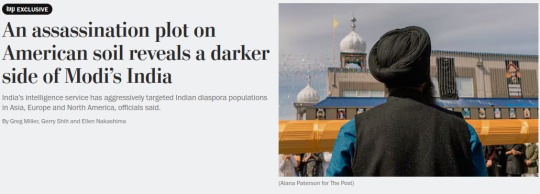
https://www.washingtonpost.com/world/2024/04/29/india-assassination-raw-sikhs-modi/
cool cool cool
(full text below the cut)
An assassination plot on American soil reveals a darker side of Modi’s India
Greg Miller, Gerry Shih, Ellen Nakashima
The White House went to extraordinary lengths last year to welcome Indian Prime Minister Narendra Modi in a state visit meant to bolster ties with an ascendant power and potential partner against China.
Tables on the South Lawn were decorated with lotus blooms, the symbol of Modi’s Bharatiya Janata Party. A chef was flown in from California to preside over a vegetarian menu. President Biden extolled the shared values of a relationship “built on mutual trust, candor and respect.”
But even as the Indian leader was basking in U.S. adulation on June 22, an officer in India’s intelligence service was relaying final instructions to a hired hit team to kill one of Modi’s most vocal critics in the United States.
The assassination is a “priority now,” wrote Vikram Yadav, an officer in India’s spy agency, the Research and Analysis Wing, or RAW, according to current and former U.S. and Indian security officials.
Yadav forwarded details about the target, Sikh activist Gurpatwant Singh Pannun, including his New York address, according to the officials and a U.S. indictment. As soon as the would-be assassins could confirm that Pannun, a U.S. citizen, was home, “it will be a go ahead from us.”
Yadav’s identity and affiliation, which have not previously been reported, provide the most explicit evidence to date that the assassination plan — ultimately thwarted by U.S. authorities — was directed from within the Indian spy service. Higher-ranking RAW officials have also been implicated, according to current and former Western security officials, as part of a sprawling investigation by the CIA, FBI and other agencies that has mapped potential links to Modi’s inner circle.
In reports that have been closely held within the American government, U.S. intelligence agencies have assessed that the operation targeting Pannun was approved by the RAW chief at the time, Samant Goel. That finding is consistent with accounts provided to The Washington Post by former senior Indian security officials who had knowledge of the operation and said Goel was under extreme pressure to eliminate the alleged threat of Sikh extremists overseas. U.S. spy agencies have more tentatively assessed that Modi’s national security adviser, Ajit Doval, was probably aware of RAW’s plans to kill Sikh activists, but officials emphasized that no smoking gun proof has emerged.
Neither Doval nor Goel responded to calls and text messages seeking comment.
This examination of Indian assassination plots in North America, and RAW’s increasingly aggressive global posture, is based on interviews with more than three dozen current and former senior officials in the United States, India, Canada, Britain, Germany and Australia. Citing security concerns and the sensitivity of the subject, most spoke on the condition of anonymity.
That India would pursue lethal operations in North America has stunned Western security officials. In some ways, however, it reflects a profound shift in geopolitics. After years of being treated as a second-tier player, India sees itself as a rising force in a new era of global competition, one that even the United States cannot afford to alienate.
Asked why India would risk attempting an assassination on U.S. soil, a Western security official said: “Because they knew they could get away with it.”
The foiled assassination was part of an escalating campaign of aggression by RAW against the Indian diaspora in Asia, Europe and North America, officials said. The plot in the United States coincided with the June 18 shooting death of Sikh activist Hardeep Singh Nijjar in Surrey, B.C., near Vancouver — an operation also linked to Yadav, according to Western officials. Both plots took place amid a wave of violence in Pakistan, where at least 11 Sikh or Kashmiri separatists living in exile and labeled terrorists by the Modi government have been killed over the past two years.
The Indian intelligence service has ramped up its surveillance and harassment of Sikhs and other groups overseas perceived as disloyal to the Modi government, officials said. RAW officers and agents have faced arrest, expulsion and reprimand in countries including Australia, Germany and Britain, according to officials who provided details to The Post that have not previously been made public.
The revelations have added to Western concerns about Modi, whose tenure has been marked by economic growth and rising global stature for India, but also deepening authoritarianism. A recent report by Freedom House, a human rights organization, listed India among the world’s practitioners of “transnational repression,” a term for governments’ use of intimidation or violence against their own citizens — dissidents, activists, journalists — in others’ sovereign territory.
India is part of an expanding roster of countries employing tactics previously associated with China, Russia, Iran, Saudi Arabia and other repressive regimes. It is a trend fueled by factors ranging from surging strains of nationalism and authoritarianism to the spread of social media and spyware that both empower and endanger dissident groups.
India’s Ministry of External Affairs declined to respond to detailed questions submitted by The Post or provide comment for this article. Responding to questions raised by a Post reporter at a news briefing last week, spokesman Randhir Jaiswal said that India was still investigating the allegations and that the Pannun case “equally impacts our national security.”
Jaiswal referred reporters to previous ministry statements that targeted killings are “not our policy.”
For the Biden administration, which has spent three years cultivating closer ties with India, the assassination plots have pitted professed values against strategic interests.
Last July, White House officials began holding high-level meetings to discuss ways to respond without risking a wider rupture with India, officials said. CIA Director William J. Burns and others have been deployed to confront officials in the Modi government and demand accountability. But the United States has so far imposed no expulsions, sanctions or other penalties.
Even the U.S. criminal case reflects this restraint. Senior officials at the Justice Department and FBI had pushed to prosecute Yadav, officials said, a step that would have implicated RAW in a murder-for-hire conspiracy. But while a U.S. indictment unsealed in November contained the bombshell allegation that the plot was directed by an Indian official, it referred to Yadav as only an unnamed co-conspirator, “CC-1,” and made no mention of the Indian spy agency.
Justice Department officials who took part in the White House deliberations sided against those urging criminal charges against Yadav. Administration officials denied any undue influence. “Charging decisions are the prerogative of law enforcement alone,” said National Security Council spokesperson Adrienne Watson, “and the Biden NSC has rigorously respected that independence.”
The only U.S. charges made public to date are against an alleged middleman, Nikhil Gupta, who is described in the indictment as an Indian drug and weapons trafficker enlisted to hire a contract killer. Gupta, an Indian national who has denied the charges, was arrested in Prague on June 30 and remains in prison. He is awaiting a Czech court ruling on a U.S. request for his extradition.
Even in recent days, the Biden administration has taken steps to contain the fallout from the assassination plot. White House officials warned the Modi government this month that The Post was close to publishing an investigation that would reveal new details about the case. It did so without notifying The Post.
Laying a trap
For decades, RAW was regarded as a regional player, preoccupied by proxy wars with Pakistan’s Inter-Services Intelligence spy agency. Under Modi, however, RAW has been wielded as a weapon against dissidents in India’s vast global diaspora, according to current and former U.S. and Indian officials.
The U.S. operation shows how RAW tried to export tactics it has used for years in countries neighboring India, officials said, including the use of criminal syndicates for operations it doesn’t want traced to New Delhi. It also exposed what former Indian security officials described as disturbing lapses in judgment and tradecraft.
After the plot against Pannun failed, the decision to entrust Yadav with the high-risk mission sparked recriminations within the agency, former officials said. Rather than joining RAW as a junior officer, Yadav had been brought in midcareer from India’s less prestigious Central Reserve Police Force, said one former official. As a result, the official said, Yadav lacked training and skills needed for an operation that meant going up against sophisticated U.S. counterintelligence capabilities.
Attempts by The Post to locate or contact Yadav were unsuccessful. A former Indian security official said he was transferred back to the Central Reserve Police Force after the Pannun plot unraveled.
The U.S. affidavit describes Yadav as an “associate” of Gupta who procured the alleged drug trafficker’s help by arranging for the dismissal of criminal charges he faced in India. Gupta had a history of collaborating with India’s security services on operations in Afghanistan and other countries, according to a person with knowledge of his background, but he had never been used for jobs in the West.
Petr Slepicka, a lawyer in Prague who represents Gupta, declined to comment on the case except to say that his client denies the charges against him. In court filings in India, Gupta’s family members described him as an innocent “middle-class businessman” whose arrest was a case of mistaken identity. They said he traveled to Prague “for tourism” and to explore new markets for a “handicraft” business, according to the court filings.
Yadav and Gupta spent weeks trading encrypted texts about the plot to kill Pannun, according to a U.S. affidavit filed in support of the request for Gupta’s extradition. To find a willing assassin, Gupta reached out to someone he had been in touch with for at least eight years and understood to be a drug and weapons dealer. In reality, according to the affidavit, the supposed dealer was an informant for the U.S. Drug Enforcement Administration.
The two were discussing “another potential firearms and narcotics transaction,” according to the affidavit when, on May 30, Gupta abruptly asked “about the possibility of hiring someone to murder a lawyer living in New York.”
From that moment, U.S. agents had an inside but incomplete view of the unfolding conspiracy. They orchestrated Gupta’s introduction to a supposed assassin who was actually an undercover agent, according to court filings. They captured images of cash changing hands in a car in New York City — a $15,000 down payment on a job that was to cost $100,000 when completed.
At one point, the indictment said, U.S. agents even got footage of Gupta turning his camera toward three men “dressed in business attire, sitting around a conference room,” an apparent reference to Indian operatives overseeing the mission. “We are all counting on you,” Gupta told the purported assassin on the video call, according to the indictment.
Yadav indicated that there would be more jobs after Pannun, including one “big target” in Canada. But a separate hit team got to that assignment first, according to the U.S. indictment, suggesting that RAW was working with multiple criminal elements.
Hours after Nijjar was gunned down in his car on June 18 outside the Guru Nanak Sikh Gurdwara temple in Surrey, Yadav sent a video clip to Gupta “showing Nijjar’s bloody body slumped in his vehicle,” according to the indictment.
The message arrived as U.S. authorities were laying a trap for Gupta. Seeking to draw him out of India and into a friendly jurisdiction, U.S. agents used their DEA informant to persuade Gupta to travel to the Czech Republic for what he was led to believe would be a clandestine meeting with his American contact, according to officials familiar with the operation.
Gupta arrived in Prague on June 30 — 11 days after Czech authorities, acting at the behest of U.S. officials, had secretly issued an arrest warrant for him.
As he exited Vaclav Havel Airport, Gupta was intercepted by Czech police, who ushered him into a vehicle in which two U.S. federal agents were waiting, according to court filings submitted by Gupta’s family in India. He was questioned for hours while the car meandered around the city. His laptop was seized and his phone held to his face to unlock it, according to the family petition.
Gupta was eventually deposited in Prague’s Pankrac Prison, where he remains awaiting possible extradition. Seeking help, Gupta’s family tried to reach Yadav last year but could find no trace of him, according to a person familiar with the matter. After months of near-constant contact with Gupta, the person said, CC-1 had “disappeared.”
Engaging with the underworld
Though Yadav served as RAW’s point man, current and former officials said the operation involved higher-ranking officials with ties to Modi’s inner circle. Among those suspected of involvement or awareness are Goel and Doval, though U.S. officials said there is no direct evidence so far of their complicity.
As RAW chief at the time, Goel was “under pressure” to neutralize the alleged threat posed by Sikh extremists overseas, said a former Indian security official. Goel reported to Doval, and had ties to the hard-line national security adviser going back decades.
Both had built their reputations in the 1980s, when the country’s security services battled Sikh separatists and Muslim militants. They were part of a generation of security professionals shaped by those conflicts much the way their U.S. counterparts came to be defined by the Sept. 11, 2001, attacks.
Doval, 79, has claimed roles in undercover missions from the jungles of Myanmar to the back alleys of Lahore, Pakistan — tales that contributed to his frequent depiction in the press as the “James Bond of India.”
He also exhibited a willingness to engage with the criminal underworld. In 2005, after retiring as head of India’s domestic intelligence service, he was inadvertently detained by Mumbai police while meeting with a reputed gangster. Doval was seeking to enlist one crime boss to assassinate another, according to media reports later confirmed by senior Indian officials.
Before being tapped as national security adviser by Modi in 2014, Doval publicly called for India’s security apparatus to shift from “defense” to “defensive offense” against groups threatening India from other countries, especially Pakistan.
Goel, who was then rising into the senior ranks at RAW, shared Doval’s instincts. Police forces under Goel’s command in the early 1990s were tied to more than 120 cases of alleged extrajudicial killings, forced disappearances or torture, according to a database maintained by Ensaaf, an Indian human rights group based in the United States. Goel was so closely associated with the brutal crackdown that he became an assassination target, according to associates who said he took to traveling in a bulletproof vehicle.
Former Indian officials who know both men said Goel would not have proceeded with assassination plots in North America without the approval of his superior and protector.
“We always had to go to the NSA for clearance for any operations,” said A.S. Dulat, who served as RAW chief in the early 2000s, referring to the national security adviser. Dulat emphasized in an interview with The Post that he did not have inside knowledge of the alleged operations, and that assassinations were not part of RAW’s repertoire during his tenure.
U.S. intelligence agencies have reached a similar conclusion. Given Doval’s reputation and the hierarchical nature of the Indian system, CIA analysts have assessed that Doval probably knew of or approved RAW’s plans to kill Sikhs his government considered terrorists, U.S. officials said.
A fierce crackdown
India’s shift to “defensive offense” was followed by a series of clashes between RAW and Western domestic security services.
In Australia, two RAW officers were expelled in 2020 after authorities broke up what Mike Burgess, head of the Australian intelligence service, described as a “nest of spies.”
Foreign officers were caught monitoring “their country’s diaspora community,” trying to penetrate local police departments and stealing information about sensitive security systems at Australian airports, Burgess said in a 2021 speech. He didn’t name the service, but Australian officials confirmed to The Post that it was RAW.
In Germany, federal police have made arrests in recent years to root out agents RAW had recruited within Sikh communities. Among them, German officials said, were a husband and wife who operated a website purportedly covering local Sikh events but who were secretly on RAW’s payroll.
In Britain, RAW’s surveillance and harassment of the Sikh population — especially a large concentration near Birmingham — became so egregious in 2014 and 2015 that MI5, Britain’s domestic security service, delivered warnings to Goel, who was then serving as RAW’s station chief in London.
When confronted, Goel scoffed at his counterparts and accused them of coddling Sikh activists he said should be considered terrorists, according to current and former British officials. After further run-ins, British authorities threatened to expel him, officials said. Instead, Goel returned to New Delhi and continued to climb RAW’s ranks until, in 2019, he was given the agency’s top job.
RAW’s record of aggressive activity in Britain has fanned suspicion that the agency was involved in the death of Sikh activist Avtar Singh Khanda, who died in Birmingham last year, three days before Nijjar was killed in Canada. British officials have said Khanda suffered from leukemia and died of natural causes, though his family and supporters have continued to press for further investigation.
A U.S. State Department human rights report released this month catalogued India’s alleged engagement in transnational repression. It cited credible accounts of “extraterritorial killing, kidnapping, forced returns or other violence,” as well as “threats, harassment, arbitrary surveillance and coercion” of overseas dissidents and journalists.
RAW’s operations in Western countries during Modi’s tenure have been overwhelmingly aimed at followers of the Sikh religion, especially a minority faction seeking to revive the largely dormant cause of creating a separate state called “Khalistan.”
That movement had peaked in the 1980s, when thousands were killed in violent skirmishes between the Indian government and Sikh insurgents. One brutal sequence beginning in 1984 included an Indian assault on the Sikh religion’s holiest site, the Golden Temple; the assassination of Prime Minister Indira Gandhi by Sikhs in her security detail; and the bombing of an Air India flight widely attributed to Sikh extremists. A fierce crackdown quashed the insurgency, prompting an exodus of Sikhs to diaspora communities in Canada, the United States and Britain.
As Sikhs settled into their new lives abroad, the Khalistani cause went quiet until a new generation of activists — whose leaders included Pannun and Nijjar — sought to rekindle the movement with unofficial referendums on Sikh statehood and with protests that at times have seemed to glorify violence. A parade in Canada last year included a float depicting Indira Gandhi’s assassination, and Khalistan supporters have stormed and defaced Indian diplomatic facilities in Western cities.
The effort has seemed to gain little traction beyond a minority within the diaspora communit
32 notes
·
View notes
Text
Train fact: NAMED TRAINS!
So you've probably heard of the Flying Scotsman. Big green thing, turned 100 this year, probably the most famous locomotive in the UK, if not the world. Adapted into Thomas the Tank Engine with a whole lot of charisma and eyebrows. But did you know that name wasn't hers originally?
'The Flying Scotsman' is actually the name (formerly a nickname) of the train. The locomotive is Flying Scotsman's monster named for it. She was given the name in 1924, to help promote said service at the British Empire exhibition. Any engine, with any rack of coaches, or any train set, can be the Flying Scotsman.
Right now, it's run by LNER's new Azumas, which get a special little outfit about it:


Most of the named trains in the UK were phased out with steam (although you can still catch the Sheffield continental from Sheffield to St. Pancras, or the Northern Lights from King's Cross to Aberdeen, among a handfull of others) but they live on elsewhere.
Some are luxury touring trains, like Japan's Seven Stars in Kyushu (left) or South Africa's Blue Train (right).


Transport isn't really the goal here. They sell out months in advance and cost anywhere from hundreds to thousands of dollars, depending on the class of ticket you get. They're an Experience, and a very cushy experience at that. Just look at their interiors!


(yes, that's a piano)
But the vast majority of named trains in operation (as far as I can tell) are regularly-running exepress services across Asia.
Japan names their Shinkanens, India, Pakistan, Bengladesh & Sri Lanka often name their intercity expresses. These are practical, long-distance services, often named for monuments, like India's Ajanta Express, named for the Ajanta caves:
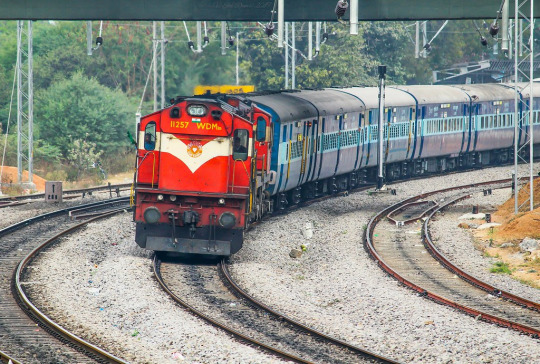
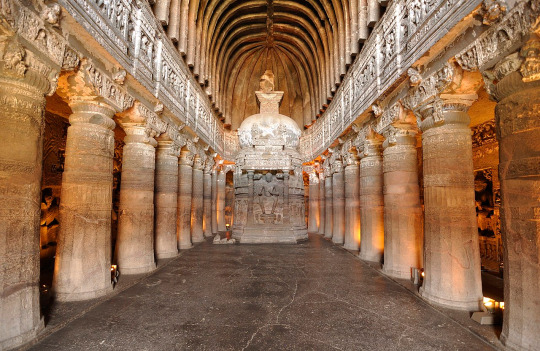
Or their operating regions, like Sri Lanka's උත්තර දේවී | Princess/Queen of the North:

Some North American countries also kept historic named routes, like Amtrak's Sunset Limited, or Canada's Ocean, which has operated continuously since 1904:

but my personal favorite named services are Australia's historically-nicknamed "The Fish", named after one of its drivers:

and the numerous trains that have been companion-nicknamed "The Chips" to match.
#Train facts!#ids in alt text#Sri Lanka Railways#LNER#modern LNER! Modern LNER! I know!#South Central Railway#Indian railways#NSW Train Link#via rail canada#the blue train#seven stars in kyushu#LNER Azuma
169 notes
·
View notes
Text
BtWoD: The Garou Nation; We All Saw It Coming Pt. 1
so. in the BtWoD continuity, the Garou Nation fell sometime in the early 2000s thanks to internal conflict, dissatisfaction with leadership, the death of Jonas Albrecht, and the ever-increasing reports of return of the Fera (despite the War of Rage seemingly having been a win). this is a little taste for what's to come in that regard :) an introduction, from the perspective of our Corax pal Electrum Wire, to the first 6 Tribes of Garou that now exist. OC under the cut!
“The Garou Nation; We All Saw It Coming,” a report by Electrum Wire, Beat Auspice, House Frugilex. Part 1 of 2.
Things have mostly settled since the collapse of the Garou Nation in 200X. New Tribes have been formed, alliances and allegiances are beginning to show, and honestly, it’s been a hoot to keep up to date with how things’ve gone in the past couple years. This report is to function as a benchmark, analyzing the political landscape of the Garou as of the year 201X. As per usual, only primary sources are used here— since this hasn’t been a priority, some of the sources p/Tribe have been a couple years apart from one another. I’ll be sure to note when certain quotes are more outdated than others.
The Acolytes of Polaris Figures that these non-white Garou Tribes would feel sidelined enough to team up. The Acolytes are made up of the frmr. Silent Striders + Stargazers Tribes, and claim their territory to be North Africa + West Asia (and even into Pakistan, but some are disputing whether that was ever in their ancestors’ range to begin with). A majority of the individuals we interviewed claimed that they weren’t ever really part of the Nation to begin with, so this new arrangement doesn’t change much.
We’ve got decent contact with them these days, since they’re looking more to build than tear down. Their wolf-kin are damn near extinct in the wild, and they’ve got enough of a brain to start making compromises for the sake of survival. They tend to trade in insight and secrets, and I’ve experienced first-hand how desperate they are. Some of the deals they’ve taken just for the sake of establishing a line? It’d make the Elders cry.
Additionally, we’ve got word from our pals in the Beast Courts that they’re looking to join up. The Hakken have always been sympathetic, after all. Who knows, as of the publishing of this report they very well could’ve made the alliance formal.
Coyote’s Council This one’s a fun one. After the Garou Nation crumbled, Patron Spirit Coyote went out recruiting from all of the Garou in North America who had native blood in them. Most of them were frmr. Ghost Council + mixed Bone Gnawers, but who knows how many other ex-Tribes were mixed in. Nowadays, they take orders from Patron Coyote, and they’re publicly working with the Nuwisha to the end of their shared master.
Has this made them more fun? Yes and no. They’re still Garou, and we all know how they can get when they’re the butt of a joke. But a bunch of them have embraced their inner coyote, and have turned into a well-oiled guerilla force in the process. Some of the reports coming out of the US’ interior sound like the plot to a rejected Tom & Jerry episode, if I’m being honest.
Strangely, they can’t be found outside of the North American continent. With the efficacy they’re showing, you’d think that Patron Coyote would want to start stretching his paws. But, nope. As of the publishing of this report, the only other place Coyote’s Council is found is in the Umbra, but that much should be obvious.
And, of course, they’re cagey as hell when it comes to their plans. Don’t trust a damn thing they’re feeding you unless you’ve got a prior arrangement, or have them under a Geas or something.
Fangs of the High North Before this section begins, a preface; Canada is off-limits. The Fangs of the High North are in the process of skirmishing with colonizing Garou (in addition to their usual activities of destroying Pentex infrastructure where they can), and the place is dangerous to the Corax. We’ve been told on multiple occasions that if we’re not there to actively help, we’re to stay the fuck away. While I’m not an advisor, I can say for certain that it scared the shit out of me, and that I can’t say I’d encourage anyone else to head there, not even for migratory purposes.
So, yeah! The Fangs are another neo-Tribe native to North America, and are primarily made up of frmr. Gale Stalkers, Red Talons, and sympathetic Get of Fenris. Now that the Nation is out of their way, they’ve been looking to take back their land by force. Can’t say I blame them. They’ve been on the warpath ever since, and considering how many other native Fera are joining the effort, I’m of the opinion that there’s a good chance they’ll give those bastards the boot.
Let’s just hope that none of the occupiers get desperate enough to turn to Malfeas for help. As of the time of publishing, there’ve been no reports of unusual Wyrmtaint coming from some of our American kin, so keep your feathers crossed!
Get of Fenris Okay. The Get has (to nobody’s surprise) become the dominant Garou Tribe in the European Continent, has made significant progress in recruiting pissed off Americans from the North and South continents, and has found incredible success in changing literally nothing about their viking/berserker philosophy. In fact, the crumbling of the Garou Nation was a GOOD THING for their leadership, as they now are unbound by any bureaucracy. We’re all very familiar with these details by now.
One thing I want to put to bed before you birdbrains start freaking out is this— THE GET ARE NOT NAZIS. The Get have a longstanding tradition (that HAS BEEN WELL CATALOGUED BY THE CORAX, LEARN TO VISIT THE LIBRARY) of forcing their cubs to shed all former ties to their human lives if they’re born Homid, including any kind of racist beliefs they might hold. ANY Get found participating in upholding any form of hierarchy OTHER than “might makes right” is immediately liable to being ganked by their peers until the racism leaves their bodies. I’ve literally seen it happen. And yeah, there was a faction of them back in WW2, but we all had some dead branches to trim from our kin back then.
Does it excuse their behavior? Abso-fucking-lutely not. But if you want to start pointing fingers at real Nazis, we’ve got dossiers your Pack can to be assigned to. Put your activism to real work, kids.
Grave Howlers They still refuse to talk to us. All of them. Not a single one gives us more than a passing sentence. All we have to go on are rumours and hearsay from other Tribes.
If you’ve heard the name “middle brother” thrown around by the American natives, take it with a grain of salt. If you’ve heard people talk about the blue runes on their fur, remember that anyone with Scottish heritage can put on woad. If you’ve heard people speaking protective rituals under their breath when they come near— eh, maybe follow their lead.
The Grave Howlers stink of Wyrmtaint, are horribly scarred from head to toe, and spend much of their time avoiding all Garou other than the Black Spiral Dancers. All reported conflicts between them and the other Tribes have been started by the latter, indicating that they’re up to something.
And just as a reminder to anyone thinking of looking into them, all of the Packs who’ve come back from their assignments refuse to talk or write about what happened. All of them. 100%. So if you’re down to gain some forbidden knowledge that’ll make the Elders pissed off, be my guest.
Hakken We’ve had a rapport with them for centuries now thanks to our kin in the Beast Courts, and nothing’s really changed over there. They were already separated geographically and politically— the shattering of the Nation did nothing to change that. So, uh. Yeah, nothing to report I guess. Other than that they might be helping the Acolytes join the Beast Courts. I think I speak for everyone when I say that it’s a relief to hear that at least one faction of Garou isn’t either blowing up, blowing someone else up, or angling to blow up.
10 notes
·
View notes
Text
In the spirit of the holiday season, I ask users (especially Christians celebrating Christmas) to make time for donating, sharing, and praying for the people of Gaza, Ukraine, South Sudan, Democratic Republic of Congo, Ethiopia, Syria, Yemen, Afghanistan, etc.
I managed to compile a list of organizations (feel free to research them thoroughly yourself) that focus on these countries and helping others across the globe suffering from widespread war, food scarcity, mass droughts, and preparations for the winter season.
International Rescue Committee (IRC/Rescue.org) (Home Page):
South Sudan: “Sudan is experiencing the world's worst displacement crisis and record levels of hunger. For a limited time, all gifts will be DOUBLED to send emergency food, medical care and other lifesaving support to starving children and families in crisis worldwide.”
Ukraine, Syria, etc: “You can help families survive harsh winter weather in Ukraine, Syria and around the world. Your support can help deliver emergency winter supplies to families in need.”
Gaza, West Bank, Lebanon: “Increasing conflict across Gaza and Lebanon has forced at least hundreds of thousands of families to flee their homes. For a limited time, your gift is matched 2X to rush help to families in crisis around the world. Donate today.”
Save the Children (Home Page):
Democratic Republic of Congo: “Right now, children are growing up against the backdrop of hunger, conflict and natural disasters. Your gift today can help make change that protects the lives of children, families and their communities: $50 - can provide enough food to keep 3 children from going hungry for a month; $150 - can wrap 30 warm, cozy blankets around children affected by conflict; $300 - can provide a month’s worth of water to 20 children.”
Charity Water (Home Page):
22 Countries Across South Asia & Africa: “This December, you can give the one thing that changes everything. Clean water improves health, reverses cycles of poverty, restores time, and unlocks new doors of opportunity. Every penny you give gets us closer to our goal of reaching 50,000 people — and because 100% of your gift funds clean water, every penny counts; It only takes $40 to give one person clean water, or $240 to provide for a family.”
Action Against Hunger (Home Page):
Somalia, Pakistan, Ukraine, Gaza, Haiti, etc: “Hunger rates are rising fast due to the effects of conflict, chronic inequality, and soaring food prices. In Somalia alone, more than half of children need urgent treatment for life-threatening malnutrition. Millions of families are just one step away from famine – we are running out of time.”
~~~~~~~~~~~~~
we cannot stand by and watch as genocide runs through the globe.
“Learn to do good; seek justice, correct oppression; bring justice to the fatherless, plead the widow’s cause.” (Isiah 1:17)
~~~~~~~~~~~~~
#pakistan#ukraine#palestine#gaza#west bank#somalia#haiti#syria#south sudan#democratic republic of the congo#congo#lebanon#afghanistan#ethiopia#yemen#international rescue committee#save the children#charity#charity water#poverty#famine#displacement#war#genocide#justice#christianity#christian#religion
7 notes
·
View notes
Text

Article
The number of children dying under five years of age declined by two thirds over the past two decades in Southern Asia, according to new mortality estimates released by UNICEF, the World Health Organization (WHO), the United Nations Population Division and the World Bank Group. Southern Asia includes nine countries: Afghanistan, Bangladesh, Bhutan, India, Iran, Maldives, Nepal, Pakistan, and Sri Lanka.
The report reveals that the number of child deaths under 5 years of age decreased from 5 million in 1990 to 1.3 million in 2022. The report also shows that Southern Asia’s under five mortality rate, or the probability that a child would die before five years of age, reduced by 72 per cent since 1990, and 62 per cent since 2000.
“We have made heartening progress to save millions of children’s lives since 1990. These aren’t just numbers on a page – these are children’s lives saved, sons and daughters, brothers and sisters. This success is largely due to investments in trained health workers, improvements in newborn care, treatment of childhood illnesses and vaccinations for children against deadly diseases,” said Sanjay Wijesekera, UNICEF Regional Director for Southern Asia. “This progress shows us that change is possible. These lives saved are testament to the engagement and will of governments, local organizations, health care professionals such as skilled birth attendants, parents, and families to save the most vulnerable children.” ...
Despite this progress, however, much more needs to be done...
The report also reveals that progress among countries is uneven. Three countries (Iran, Sri Lanka and Maldives) have achieved the SDG 2030 target for under five child mortality reduction and four are on track to meet the target (India, Bangladesh, Bhutan and Nepal). For example, Bangladesh’s neonatal mortality rate decreased from 66 deaths per 1,000 live births in 1990, to 17 deaths per 1,000 live births in 2022.
However, in Pakistan and Afghanistan, urgent action is required to accelerate their annual rates of reduction substantially to meet 2030 targets...
“We call on governments across the region to invest in simple solutions such as having trained birth attendants at every birth, ensuring that all newborns have essential care, better care of small and sick newborn babies, medicines, clean water, electricity, and vaccines to save lives. Every child has the right to healthcare.”
-via UNICEF, March 14, 2024
#children#cw infant death#cw child death#neonatal#public health#south asia#asia#iran#sri lank#maldives#india#bangladesh#bhutan#nepal#pakistan#afghanistan#medical news#children's rights#infant mortality#unicef#good news#hope
228 notes
·
View notes
Text
The penetration of China by Buddhism not only gave the Chinese a new religion but, of central importance to this narrative, it gave to the world an entirely new style of art which has come to be known as Serindian. This term is coined from the two words Seres (China) and India. Logically it should have been simply a fusion of Indian Buddhist art and the art of contemporary Han China. It almost certainly would have been had it not been for the great Himalayan massif which so effectively isolated China from all direct contact with India. But faced by this impenetrable barrier, the gospel of Buddhism together with its art came to China by a roundabout route, gradually absorbing other influences on its way. Its real point of departure was not India proper but the Buddhist kingdom of Gandhara, situated in the Peshawar valley region of what is now north-western Pakistan. Here another artistic marriage had already taken place. This was between Indian Buddhist art, imported by the ruling Kushans (descendants of the Yueh-chih) in the first century AD, and Greek art, introduced to the region four hundred years earlier by Alexander the Great. The most revolutionary product of this Graeco-Buddhist, or Gandharan, school was the depiction of Buddha in human form, for it was the first time that artists anywhere had allowed themselves to show him thus. As a being who had ceased to exist, theologically speaking, by achieving Nirvana and thus escaping the endless cycle of rebirth, he had always been portrayed before by means of a mystical symbol such as a single footprint, a wheel, a tree, a stupa or Sanskrit characters. But the Gandharan Buddha is shown by sculptors with straight, sharply chiselled nose and brow, classical lips and wavy hair–all Hellenistic influences. Another obvious Mediterranean introduction is the diaphanous, toga-like robe he wears in place of the expected loin cloth. But his eyes are heavy-lidded and protruding, the lobes of the ears elongated, and the oval-shaped face fleshy–all characteristics of Indian iconography. The stretched ear lobes symbolise Buddha’s casting away of the heavy, jewelled and worldly earrings that he had worn as a wealthy prince before his conversion to a life of self-denial and teaching
—Peter Hopkirk, Foreign Devils on the Silk Road: The Search for the Lost Cities and Treasures of Chinese Central Asia
#peter hopkirk#foreign devils on the silk road#history#china#india#gandhara#Buddhism#art#w#2024 reads#upl#reading through the silk road
28 notes
·
View notes
Note
I know this hot guy through some mutual friends at university and he’s a Pakistani man. I really like him but he says that he’ll only date big guys from the Middle East or South Asia. Is there anything on Chronivac that could make me his type? I really really like this guy and want to date him.
Dude, your parents moved to the States from Peshawar when you were four years old. Of course, you only speak Urdu at home, but you're a real New Jersey lad at heart. Fuck, what kind of thoughts are those now? اس سے بے خبر کہ سمندر مقدس کیا ہے۔ Take a deep breath. You're from Connecticut. Born, raised, your parents had a Pakistani restaurant…. Fuck, what's with Pakistan in your head. Your parents were both doctors. Both went to university in…. In… Islamabad. Chill out, dude. Maybe it will help if you start your day with sunrise prayers like a good Muslim. Do your ablutions. You could also shave again. Dude, you've got some serious body hair. I like it, but it doesn't go down well in amateur competitions.

You see, prayer has helped you to focus. Now you have your thoughts sorted out again, Mirza. You should go to the gym now, otherwise you won't be able to finish today's program before the lectures start. You owe it to your parents to cut a good figure as an athlete and academic. And besides, you know that your crush usually goes out to work at this time of day, too. Today you should finally take a shower together!
130 notes
·
View notes
Text
Record temperatures last year pushed the global water cycle to “new climatic extremes,” according to the Global Water Monitor 2024 report. The document, produced by an international consortium led by researchers at Australian National University, states that these climatic anomalies caused devastating floods and droughts that resulted in more than 8,700 deaths, the displacement of 40 million people, and economic losses exceeding $550 billion.
The report was conducted by an international team and was led by ANU professor Albert van Dijk. It reveals that 2024 was the warmest year so far for nearly 4 billion people in 111 countries, and that air temperatures over the Earth’s surface were 1.2 degrees Celsius higher than documented at the beginning of the century and 2.2 degrees Celsius higher than at the start of the Industrial Revolution.
Van Dijk asserts that water systems around the globe were affected. “From historic droughts to catastrophic floods, these severe climate variations affect lives, livelihoods, and entire ecosystems. Water is our most important resource, and its extreme conditions are among the greatest threats we face,” he says.
The report authors analyzed data from thousands of ground and satellite stations that collect near real-time information on critical water variables, including rainfall intensity and frequency, soil moisture, and flooding.
“We found rainfall records are being broken with increasing regularity. For example, record-high monthly rainfall totals were achieved 27 percent more frequently in 2024 than at the start of this century, whereas daily rainfall records were achieved 52 percent more frequently. Record lows were 38 percent more frequent, so we are seeing worse extremes on both sides,” says Van Dijk.
The research states that, as a consequence, sea-surface temperatures rose, intensifying tropical cyclones and droughts in the Amazon basin and southern Africa. Global warming favored the formation of slower-moving storms in Europe, Asia, and Brazil, subjecting some regions—such as Valencia in Spain—to extremely high levels of rain. Widespread flash floods occurred in Afghanistan and Pakistan, while rising levels in the Yangtze and Pearl rivers in southern China damaged rice crops.
“In Bangladesh, heavy monsoon rains and the release of water from dams affected more than 5.8 million people, and at least 1 million tons of rice were wiped out. In the Amazon basin, forest fires triggered by the hot, dry weather devastated more than 52,000 square kilometers in September alone, releasing huge amounts of greenhouse gases,” Van Dijk says.
The study adds that changes in the water cycle intensified food shortages, impaired shipping routes, and disrupted hydropower generation in some regions. “We need to prepare for and adapt to inevitably more severe extreme events. That may mean adopting stronger flood defenses, developing new food production systems and more drought-resistant water supply networks,” suggests Van Dijk.
World leaders have pledged to implement measures and policies to prevent global warming from exceeding 1.5 degrees Celsius above preindustrial levels by the end of the century, but the World Meteorological Organization has pointed out that current efforts are insufficient. The WMO estimates that there is an 80 percent chance that the average global temperature will exceed 1.5 degrees Celsius above preindustrial levels again in at least one of the next five years. The projection suggests that humanity is far from meeting the goals of the Paris Agreement and raises new concerns about the progress of climate change.
Securing financial resources is another challenge. The United Nations Environment Program estimates that the funding gap for climate change adaptation is between $194 billion and $366 billion annually.
António Guterres, secretary general of the United Nations, has said that “we are teetering on a planetary tightrope. Either leaders close the emissions gap or we are hurtling towards climate disaster, with the poorest and most vulnerable suffering the most. The countdown to action has begun.”
6 notes
·
View notes
Text

2024 / 33
Aperçu of the week
“All we have to do is call our opponent a communist or a socialist or someone who will destroy our country.”
(Donald Trump. We'll see about that...)
Bad News of the Week
Since the end of the coronavirus pandemic - although there hasn't actually been one - I've been waiting for its successor in a slightly anxious mood. Another rapidly infecting virus that spreads worldwide, is potentially deadly and, above all, restricts all our lives again. Now it's here: Mpox. For the first time since Corona, the WHO (World Health Organization of the United Nations) has declared the highest alert level, a “public health emergency of international concern”. Because of the virus that was previously called “Monkey Pox”. Discovered in Congo at the end of 2023, it has now also broken out in Uganda, Rwanda, Burundi and Kenya.
The initial figures spoke of 14,000 suspected cases. Based on the usual 50% rate and the reported 500 deaths, this means that one in twelve people who become infected will die. That's a lot. So it's certainly a virus that should be taken seriously. One day later, it was reported that the first case in Europe had emerged in Sweden. Then the first three in Asia in Pakistan. It's the usual pattern: on the one hand, every infectious disease spreads faster and more uncontrollably in times of international travel. On the other hand, specific cases are only discovered when they are specifically sought or tested for. So the numbers will now quickly go through the roof. Because the spread is already more advanced than we know.
What will happen now? What will the states do? How will society react this time? And above all: what have we learned? There is a lot of talk in Germany about the need to come to terms with everything that has happened around COVID. Also to learn from the mistakes. There is a lot of need for clarification - for example with regard to the procurement of masks, the closure of schools, compulsory vaccination, curfews and unequal treatment in the retail sector. And what has happened since (drum roll please!): Nothing. What applies to politics also applies in private life. Some friends turned out to be conspiracy theorists, others were law and order hardliners, most were simply irritated and unsettled. There were even rifts right through families. Rifts that still exist.
And now we could all be facing the same situation, just as ill-prepared. And if Mpox doesn't develop into a pandemic, perhaps swine fever will spread to humans. Or bird flu. Or something else entirely, be it from the South American jungle or from the secret laboratory of some deep state. Or a revenant from the past spreads again - cholera still exists after all and first cases of polio are reported from Gaza. No, I'm not panicking. But I do have one or two worries. After all, humanity has shown itself more than once to be incapable of learning from the past. I would love to be wrong about that.
Good News of the Week
Venezuela is not giving up. It is wonderful to see how the people are fighting for democracy, no longer wanting to put up with the corruption of their “elites” and finally wanting to have a perspective worth living in. Just under a month ago, elections were held in the Latin American country, which could actually live in prosperity and peace but is suffering from dramatic economic decline, inflation and poverty since years. Or as investigative journalist Sebastiana Barráez says in the news magazine Der Spiegel: “Maduro has couped!”
Initially, the state electoral authority declared President Nicolás Maduro Moro, who has been clinging to power since 2013, the winner without providing any evidence - as is actually required by the constitution. The opposition has now had access to more than 80 percent of the printed protocols of the individual polling stations and has made them public. According to these, their candidate Edmundo González won with around 67 percent of the vote - compared to 30 percent for the incumbent head of government. So did Maduro commit electoral fraud? It looks like it.
The United Nations and the Carter Center had sent election observers to Venezuela. They have now criticized the election authority's actions and declared that the official result was not achieved democratically. The panel of experts speaks of an “unprecedented process in recent electoral history”. No wonder that most Latin American countries as well as the USA and Europe did not recognize the “official result”. And Maduro? He doesn't give a damn. The despot has further intensified the repression against the population with the help of the military, the National Guard and other state organs loyal to him. According to the independent rights organization Foro Penal, over 2,000 people have been arrested since the election. These include opposition politicians. And journalists. That speaks a clear language.
According to a report in the Wall Street Journal, the US government has now offered Maduro and close associates of the regime an amnesty if they relinquish power. I wish the Venezuelans would keep up the pressure. And the international stage too. Until Madura and his clan really abdicate. Because then the country, which has already been abandoned by 20% of its population in recent years, could return to better times. In a survey conducted by the Gallup polling institute in December 2012, the country's inhabitants were among the happiest people on earth. It would be nice if this vague memory could become reality again.
Personal happy moment of the week
“Your application for an Electronic Travel Authorization (eTA) has been approved. You are now authorized to travel to Canada by air.” Nothing more to add here. Taking off this sunday. Boy am I excited...
I couldn't care less...
...about the discussion that Germany “only” came 10th in the medal table at the Summer Olympics in Paris - behind hosts France and Great Britain, even though their populations are smaller. “What does it take for more medals?” asks the Tagesschau news channel. That is of little interest to me. Much more important is the charisma of athletes as figures of identification for a nation, the role model function for children, the motivation to surpass oneself. After all, it's not for nothing that the Olympic motto is “Taking part is everything”. In that sense, Eddie the Eagle really did fly.
It's fine with me...
...that the Democrats' party conference is now turning into a coronation mass. Because the most important decisions have been made: Presidential candidate and his (better in this case “her”) running mate. Normally, I would now say that political program content should not be completely secondary. But I don't care about that at the moment. The main thing is momentum. The main thing is optimism. The main thing is not to go back. The main thing is that Donald Jessica Trump doesn't triumph in November. Harris Walz!
As I write this...
...we're trying to catch a mouse. Apparently it was raining too hard outside and it wanted to get out into the dry. Now she's hiding behind a bookshelf and is afraid of us - even though we want to rescue her and set her free. Update: we've got her and she's fine. Second update: there seems to be another one...
Post Scriptum
It's good when someone doesn't look away but points. Even if it's about Israel committing an injustice. After all, you are then almost reflexively vilified as an Anti-Semite. In this respect, I am pleased that the European Union is showing more and more backbone in this regard. In this case, I am not referring to the maltreated Gaza Strip, but to the West Bank, where the Palestinian population is suffering more and more from brutal attacks by militant Israeli settlers - who can be sure of the backing of Benjamin Netanyahu's increasingly right-wing extremist government.
Once again, there have been attacks by extremist Israeli settlers on the population of the West Bank. And now EU foreign policy chief Josep Borrell has had enough. He will “present a proposal for EU sanctions against the supporters of the violent settlers, including some members of the Israeli government”. Including the government! That's a bombshell. I very much hope that he finds the necessary support for this. Because this massive problem is currently all too easily overlooked in the great shadow of Gaza.
#thoughts#aperçu#good news#bad news#news of the week#happy moments#politics#donald trump#mpox#monkey pox#who#pandemic#coronavirus#venezuela#nicolas maduro#democracy#elections#canada#olympic games#Paris#democrats#kamala harris#mouse#gaza#west bank#josep borrell#european union#israel#tim walz#eddie the eagle
8 notes
·
View notes
Text

World Flags Part 1: Asia / Sims 4 cc
It's Ready! World Flags Collection, Part 1: Asia
Includes flags from all the countries in Asia, as well as 13 bonus flags of various subdivisions and communities across the Asian continent. A sims 4 base game recolor item.
I have been downloading s4cc for many years now, and as far as I know there still hasn't been a flag recolor for every country in the world, so I have decided to take the project up myself :)
I will be releasing the flags per continent - part 2: Europe coming next. Enjoy!
Much love, Aviv
︵‿︵‿︵‿︵
Full list of Flags;
Countries: Afghanistan, Armenia, Azerbaijan, Bahrain, Bangladesh, Bhutan, Brunei, Cambodia, China, Cyprus, Georgia, India, Indonesia, Iran, Iraq, Israel, Japan, Jordan, Kazakhstan, Kuwait, Kyrgyzstan, Laos, Lebanon, Malaysia, Maldives, Mongolia, Myanmar, Nepal, North Korea, Oman, Pakistan, Palestine, Papua New Guinea, Philippines, Qatar, Saudi Arabia, Singapore, South Korea, Sri Lanka, Syria, Taiwan, Tajikistan, Thailand, Timor-Leste, Turkey, Turkmenistan, United Arab Emirates, Uzbekistan, Vietnam, Yemen.
& Bonus Flags: Kurdish, Alternate Syria - green, Yazidi, Hong Kong, Assyrian, Tibet, Sikh, Parsi, Xinjiang/Uyghur, Macau, Baha'i, Balochistan, Sakha Republic/Yakut.
︵‿︵‿︵‿︵
Download on Patreon / base game compatible
#s4cc#s4ccfinds#s4 custom content#s4mm#ts4cc#s4 recolor#s4cc download#s4cc free#s4ccart#s4ccdecor#s4ccwalldecor#s4ccwallart#s4ccinternational#s4ccflags#s4ccflag#s4ccasian#s4ccmiddleeastern#s4ccindian#s4ccasiandecor#s4ccworldflags#s4ccworld#s4cc furniture#s4cc buy#maxis match#ts4 urban cc#ts4 simblr#simblr#flags#s4ccessentials#s4cckurdish
12 notes
·
View notes